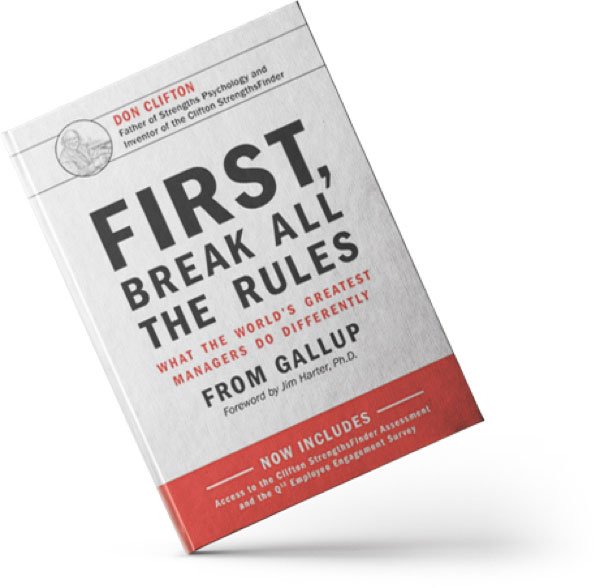Over the course of June, the Education and Skills Funding Agency (ESFA) has been very, very busy. They’ve published two key regulatory documents for the academies sector; the Academies Accounts Direction 2019 to 2020 (AAD 2020) and the Academies Financial Handbook 2020 (AFH 2020), as well as publishing some much-awaited guidance on claiming funding for the exception costs incurred in responding to COVID-19.
So, we thought it would be helpful to detail the key changes from these documents and guidance and share our insights into what actions you should take away from them.
COVID-19 EXCEPTIONAL COSTS FUNDING
The ESFA have now published some updated guidance on the funding for exceptional costs incurred in relation to COVID-19, including the process for claiming the funding.
In terms of timing, the online claim form must be completed by 21 July 2020, which will be for all exceptional costs incurred up to that date. The ESFA then expect to make payments of the funding at the beginning of September. A further claim window will open in the autumn and further details on this will be provided by the ESFA in due course.
One of the questions we have received from many academies is whether the claims are at an individual school level or a trust (MAT) level. Our understanding from previous discussions with the ESFA was that this was at an individual school level and the additional information and guidance provided by the ESFA now confirms this.
One of the key issues with the previous guidance was around the eligibility for the funding and the updated guidance also provides some clarity around this. The key points to note on this are:
- The funding covers exceptional costs incurred in relation to the 3 specific areas outlined in the guidance. Broadly speaking, they are increased premises related costs, support for free school meals for eligible children who are not attending school, and additional cleaning costs
- There is an option to submit with the claim a claim for other exceptional costs incurred outside of these 3 specific areas, but this is only to the extent those other costs cannot be met from existing budgets
- To be eligible to claim the funding, you must not be expecting (i.e. forecasting) to add to your historic reserves in the 2019/20 academic year (i.e. the year ending 31 August 2020). In simple terms, this means that if after incurring the exceptional costs you are still forecasting you will generate a surplus for the 2019/20 academic year, then you are not eligible to claim the funding. Remember though, this is at an individual school level and not at trust (MAT) level
- The maximum amount of funding that can be claimed will be subject to the limits set out in the guidance.
With claiming for the other exceptional costs outside of the 3 specific areas, these will be subject to further assessment by the ESFA and so are not guaranteed in any way. Key to note here is that the guidance from the ESFA specifically sets out that this will not cover costs associated with opening schools to more pupils from 1 June, additional staff costs or loss of self-generated income.
While the maximum amount of funding that can be claimed will be subject to the limits set out in the guidance, if the actual costs incurred are in excess of these limits, then there is scope to claim the higher costs incurred, but this will again be subject to further assessment by the ESFA and so again is not guaranteed in any way.
One of the questions we have also had from a few academies is about recognising this income in the 2019/20 year. Based on the income recognition principles under the Charities SORP, it would be appropriate to recognise this income in the 2019/20 year if a claim has been submitted by the 21 July deadline. In terms of how much to recognise as income, it will depend on the value of the claim and also whether you are claiming for other costs outside the 3 specific areas or indeed for amounts over the funding limits. However, given the funding is expected to be paid in early September, the safest option is to wait and see what amount is received and then accrue this in your 2019/20 year accounts.
All the details of the claim process and the updated guidance can be found here.
ACADEMIES FINANCIAL HANDBOOK 2020
The AFH provides an overarching framework for the implementation of effective financial management and control in academies and is one of the keyways the ESFA set out what they expect from academies in using public funds.
The AFH 2020 is effective from 1 September 2020 onwards and as always, compliance with it is a condition of all academy trust’s Funding Agreements.
The full AFH 2020 can be found on the ESFA’s website.
MORE ‘MUSTS’ FOR 2020
One of the key aspects of the AFH 2020 is the ‘musts’ which set out each of the financial requirements that are mandatory for academies to follow.
As always, there is a useful section in the AFH (Part 8) which summarises all the ‘musts’. For the real enthusiasts out there, in the AFH 2020 there are 103 ‘musts’ which compares to 97 in the current AFH! Some of the additional ‘musts’ are clarifications around areas that were previously expected but just not clearly spelt out, while others represent some new additional requirements, especially in terms of the expectations of Audit and Finance Committees.
What’s clear from it all is the ESFA’s continual drive for the highest standards of financial management and governance in academies.
So, what are the key changes? These are conveniently summarised on page 9 of the AFH, but we’ve expanded on these a little further here.
GOVERNANCE CHANGES
Members
One of the key changes is around members of the trust and specifically, who can be one. Under paragraph 1.4, employees must not be members but what’s been added is that this now also extends to being an employee on an unpaid voluntary basis.
This requirement is effective from 1 March 2021, which means existing academy trusts which have a provision in their Articles of Association allowing employees to be members are going to have to revise their Articles to reflect this requirement.
Members and trustees working together
There is also some extra emphasis around members working with the trustees and paragraph 1.8 now sets out that it’s important for members to be kept informed about the trust and its business so they can ensure the trustees are exercising effective governance, and that this must now include providing members with the annual trustees’ report and audited accounts.
What’s going to be important therefore is that trustees ensure there is a process for a regular dialogue with the members throughout the year. This is particularly important where there is a large degree of separation between members and trustees, which is the ESFA’s preference anyway. This could be achieved through an annual meeting with the members or through providing the members with copies of the minutes of trustee meetings through the year.
Going concern
This has been a very topical area in recent years, especially in those end of year accounts discussions with your auditors!
Paragraph 1.14 now sets out that in addition to the trustees’ responsibility for ensuring regularity and propriety in the use of public funds, they must now also take ownership of the trust’s financial sustainability and its ability to continue as a going concern.
This is particularly important with ongoing funding pressures and uncertainty around some aspects of funding going forward, including funding for costs incurred in dealing with the current COVID-19 pandemic. The ESFA have previously produced a good practice guide on going concern to assist trustees in understanding what going concern means and how to challenge this in their trusts more effectively. The ESFA’s good practice guides can be found here.
Appointing a clerk to the board of trustees
One subtle but important change is in paragraph 1.40 which sets out that trusts must now appoint a clerk to support the board of trustees. Previously, this was a ‘should’.
Updating registers of interest
While it’s still a mandatory requirement to maintain a register of interests for all members, trustees, local governors, and senior employees, what’s new now in paragraph 5.46 is that the register of interests must be kept up to date at all times.
What most trusts would do is update the register of interests on an annual basis, often at the start of the academic year. It’s clear this is now no longer sufficient. Trusts are going to need to ensure they have a process in place for capturing any changes in interests for those relevant people throughout each year, and then ensuring they update the register of interests as published on the trust’s website.
EXECUTIVE TEAM CHANGES
Employment status of the Accounting Officer and Chief Financial Officer
A key change in the AFH 2020 is around the Accounting Officer and Chief Financial Officer (CFO) and specifically their employment status. In paragraphs 1.26 and 1.36, it’s stated that both the Accounting Officer and the CFO should be employees of the trust, but then it goes on to say that the trust must obtain the ESFA’s prior approval if they propose appointing someone, in exceptional circumstances, in these roles who will not be an employee.
So, it’s pretty clear that the ESFA really want these roles to be filled by employees! This is therefore going to be an important consideration for trusts whose existing Accounting Officer or CFO are not currently employees, as they are likely going to need to obtain the ESFA’s approval prior to 1 September 2020 for these roles to continue.
CFO experience and qualifications
The ESFA have also provided some expectations around the particular skills and experience the CFO should have, which are set out in paragraph 1.37. Essentially, it encourages larger trusts (defined as those with more than 3,000 pupils) to consider whether the CFO should have a recognised accountancy qualification from a professional body such as the ICAEW, ACCA, CIMA and CIPFA (which includes the qualifications developed in partnership with ISBL).
We’ve certainly seen larger trusts moving this way anyway, as the requirements and expectations of CFO’s in larger trusts have really moved on from the more traditional business manager roles.
GENERAL CONTROLS AND TRANSPARENCY CHANGES
The AFH 2020 has certainly increased the expectation around what controls trusts should have in place and the level of transparency going forward. These are all largely detailed in Part 2 of the AFH 2020 and now include:
- Adding that the trust must maintain a fixed asset register
- Expanding the requirement around preparing and monitoring financial plans for the trust so that trustees must satisfy themselves the trust remains a going concern and that they must consider a longer-term view of the trust’s financial plans through the 3-year budget forecast returns
- Adding that trustees should challenge pupil number estimates and review these termly
- Adding that trustees are encouraged to adopt Integrated Curriculum Financial Planning (ICFP) to ensure curriculum planning provides the best education with the funding available
- Emphasising that trusts must avoid using bank overdrafts and that this includes all individual accounts used by the trust
- Adding that alcohol must not be purchased from the trust’s funds, although there is now an exception where it is for religious services. This is still a hotly debated topic and although not detailed in the AFH, the ESFA’s view is that any activity where alcohol is purchased (like sports bars in leisure centres, bars at theatres etc) will need to be in a separate entity such as a trading subsidiary. There are still areas of confusion with this, so it’s always an area you should seek some advice on!
- Adding that the trust’s whistleblowing procedures must be published on the trust’s website
- Expanding that the trust’s risk register must be reviewed by the board of trustees at least annually and that they retain ultimate oversight and responsibility for the register and should only receive support and advice on it from the Audit Committee (or equivalent)
- Adding that all trusts must complete the School Resource Management Self-Assessment Tool (SRMSAT) and submit this to the ESFA each year. The submission date for this has not yet been announced, but our understanding is it will be around mid-March each year.
One of the key changes in the AFH 2020 in this area is around the publication of executive pay, which is essentially any employees whose benefits (which means gross salary, other taxable benefits, and termination payments) are more than £100,000. Under paragraph 2.32, a trust must now publish on its website the number of employees whose benefits exceed £100,000. This information should be as an extract from the disclosure included in the trust’s financial statements for the previous year and should be reported in £10,000 bandings.
What this means in practice is that from 1 September 2020, a trust will need to publish the required information on its website based on the most recent financial statements disclosure, which will mean the information included in the financial statements for the year ended 31 August 2019. Once the financial statements for the year ended 31 August 2020 are published, the information on the website should then be updated for that information.
INTERNAL SCRUTINY CHANGES
Internal scrutiny continues to be another hot topic in the academy sector and as expected, there are some further changes and clarifications around this in the AFH 2020. It’s quite clear the ESFA are continuing to strengthen this area and encouraging trusts not to just look at a basic approach in relation to internal scrutiny but to look at a much wider and holistic approach so they can ensure their internal controls and procedures are fit for purpose, are being complied with and that risks are being managed appropriately.
The AFH 2020 has now clarified the scope of internal scrutiny work and that this must now cover both financial and non-financial controls. As trailblazers in this area, we have been doing a lot of work with trusts over the last 12 to 18 months looking at much wider areas than pure financial controls. We’ve looked at trust’s governance arrangements and structures, reviewed trust’s risk management plans and risk registers, reviewed trust’s central services structures and basis of charging central services, reviewed trust’s growth capacity plans and even done some initial IT systems review work.
The key changes
A key change introduced in the AFH 2020 is to emphasise that in line with the Financial Reporting Council’s revised Ethical Standard for auditors, audit firms are no longer able to provide internal scrutiny services to a trust were they are also the external auditors. Whilst there are some transitional provisions around this which allow any existing engagements for internal scrutiny services at 15 March 2020 to be completed, what it effectively means in practice is that from the beginning of the 2020/21 academic year (i.e. from 1 September 2020), trusts will need to appoint a separate organisation to provide their internal scrutiny services (or of course look at one of the other options for doing internal scrutiny as set out in the AFH).
When considering options for undertaking the internal scrutiny, the AFH 2020 also now emphasises that trusts can use other people / organisations when covering non-financial controls, so it’s not just about using one provider for all the work but using the right people and expertise for the right area.
With this, if non-financial controls have been reviewed as part of a trust’s internal scrutiny work for a particular year, then the findings from this should also be incorporated into the annual summary findings report submitted to the ESFA by 31 December each year.
The AFH 2020 also now provides a link to the good practice guide produced by the ESFA on internal scrutiny, which you can find with all the other ESFA good practice guides here.
ANNUAL ACCOUNTS AND EXTERNAL AUDIT
The key change here is the addition of the expected remit of the Audit Committee (or equivalent) in paragraph 4.17.
A trust’s Audit Committee must now:
- Review the external auditor’s annual external audit plan
- Review the external auditor’s findings report including management responses
- Review the annual trustees’ report and accounts
- Assess the effectiveness and resources of the external auditor to provide a basis for decisions by the trust’s members about the auditor’s reappointment or dismissal or retendering (considerations could include sector expertise, understanding of the trust, timely and efficient process, quality of audit recommendations and general relationship)
- Produce an annual report of the Committee’s conclusions to advise the board of trustees and members, including recommendations on the reappointment or dismissal or retendering of the external auditor, and their remuneration.
So, some important aspects here for Audit Committees (or equivalent) to be aware of!
DELEGATED AUTHORITIES
While there are no changes in the delegated authorities for academies, which are all set out in Part 5 of the AFH 2020, there is a subtle emphasis change to note in relation to leasing.
Everyone knows academy trusts are not able to borrow, which includes entering a finance lease or bank overdraft arrangement, without the specific prior approval of the ESFA. Whilst there is no change here, there is a very subtle change in paragraph 5.25 of the AFH 2020 which sets out that taking up a finance lease is linked to the general borrowing restrictions under the AFH. What this effectively means is that where there is an agreement in place to lease an asset which represents borrowing which is to be repaid from grant funds or secured on assets funded by grant funds, the ESFA approval is required.
There is also a link to the ESFA’s good practice guide on leasing.
It’s also worth referring to the update we provided earlier in the year here which provided a reminder about finance leases and the issues to look out for.
ACADEMIES ACCOUNTS DIRECTION, 2019 TO 2020
The AAD is the reference pack for academy trusts and their auditors to use when preparing and auditing academy trust financial statements. The 2019 to 2020 AAD applies to financial periods ending on 31 August 2020 and compliance with the AAD 2020 is mandatory for all open and operating academy trusts.
The full AAD 2020 can be found on the ESFA’s website here.
While there are a few changes in some of the disclosures required in the financial statements, most of the key changes in the AAD 2020 are in the trustees’ report and related governance and regularity statements, so we have outlined these in a bit more detail.
NEW REPORTING REQUIREMENTS IN TRUSTEES’ REPORTS
There are some important new statements and narrative required to be included in the trustees’ reports for the period ending 31 August 2020. Some of these new requirements may be quite onerous for some trusts, so it’s important for trustees and management teams to start looking at these as early as possible.
Most of these changes apply to those academy trusts which meet the definition of a large company under the Companies Act 2006, so it’s important to understand what a large company is.
An academy trust will qualify as large for the purposes of this reporting where it satisfies two or more of the following in two consecutive financial years:
- Gross annual income of more than £36m
- Gross (i.e. total) assets of more than £18m
- More than 250 employees.
Reporting on the academy trust’s business relationships
Under The Companies (Miscellaneous Reporting) Regulations 2018, all large companies must include a statement in the trustees’ report describing how the trustees have had regard to the need to foster business relationships with suppliers, customers and others, including its effect on the principal decisions taken during the year.
In the context of academy trusts as charitable companies, when reporting on this it’s important for trustees to consider expanding this to cover their relationships with other stakeholders, such as pupils, parents, key funders, and the wider community.
Reporting on promoting the success of the academy trust
Under section 172(1) of the Companies Act 2006, the trustees already have a responsibility to act in a way most likely to promote the success of the company, and in doing so must have regard to:
- The likely consequences of any decision in the long term
- The interests of the company’s employees
- The need to foster the company’s business relationships with suppliers, customers, and others
- The impact of the company’s operations on the community and the environment
- The desirability of the company maintaining a reputation for high standards of business conduct
- The need to act fairly as between members of the company.
Under The Companies (Miscellaneous Reporting) Regulations 2018, all large companies must now also include a statement in the “strategic report” section of their trustees’ report describing how they have had regard to the matters detailed in section 172(1) above.
In the context of academy trusts as charitable companies, when reporting on the success of the company, this should be focused on promoting the success of the trust in achieving its charitable educational purposes.
In making this statement, there is likely to be some overlap with the narrative detailed above around the trust’s business relationships, so it’s important to avoid just repeating that narrative but will be quite acceptable to cross-reference the narrative where appropriate.
The statement under section 172(1) must also be published on the academy trust’s website. This can be published as a separate statement on the website but as academy trusts must also publish their full annual trustees’ report and financial statements on their website, this will satisfy this requirement.
Reporting on the academy trust’s engagement with its employees
Under The Companies (Miscellaneous Reporting) Regulations 2018, for all companies with more than 250 employees, the trustees must now also include a statement in their trustees’ report summarising how they have engaged with employees, and how they have had regard to employee interests, and the effect of that regard, including on the principal decisions taken by the academy trust during the financial year.
The statement must describe the action that has been taken during the financial year to introduce, maintain or develop arrangements aimed at:
- Providing employees with information on matters of concern to them
- Consulting employees or their representatives regularly so that the views of employees can be taken into account in making decisions which are likely to affect their interests
- Encouraging the involvement of employees in the company’s performance
- Achieving a common awareness on the part of all employees of the factors affecting the performance of the company
- Its policy in respect of applications for employment from disabled persons, the treatment of employees who become disabled and the training, career development and promotion of disabled person.
- For each of the new reporting requirements outlined above, in addition to the information in the AAD, the Charity Commission has also published a guide: Charities SORP Information Sheet 3: The Companies (Miscellaneous Reporting) Regulations 2018 and UK Company Charities, which can be found here.
Streamlined energy and carbon reporting
The final, and probably the most significant, new reporting requirement relates to the streamlined energy and carbon reporting required in the trustees’ report under the Companies (Directors’ Report) and Limited Liability Partnerships (Energy and Carbon Report) Regulations 2018.
These regulations require large companies which consume more than 40,000kWh of energy in the UK in a reporting period to include certain information about energy efficiency measures.
The information required to be disclosed includes the following:
- Its energy use and emissions
- An emissions intensity ratio, which expresses the academies annual emissions in relation to a quantifiable factor associated with its activities
- Methodologies used in the calculations of disclosures
- Measures taken to improve energy efficiency in the period.
In determining whether the 40,000kWh threshold is met, academy trusts must consider, as a minimum, all the energy from gas, electricity, and transport fuel usage they are responsible for.
If the threshold is met during the reporting period, but the academy trust does not meet the large company criteria, then no statement is required in the trustees’ report. However, a statement including all the required information will need to be published on the academy trust’s website by 31 March 2021.
If an academy trust consumes less than 40,000kWh of energy in the reporting period, whether it’s also deemed to be large or not, it does not need to include any statement in the trustees’ report or on the website provided that the trustees’ report states the reason why this information has not been disclosed (which is essentially that its consumed less than 40,000kWh of energy in the reporting period). In these circumstances, trusts are encouraged to make the disclosures on a voluntary basis, although this may be done on the trust’s website rather than in their trustees’ report.
Where it is not practical to calculate the required energy usage information for whatever reason, this should be reported in the trustees’ report and it should also explain what steps the trust is taking to calculate this information in the future.
The Government has published guidance on how to approach these new disclosure requirements which is available here.
The ESFA have also produced a good practice guide to assist academy trusts with this reporting requirement, which can be found with the other suite of good practice guides here. This includes a worked example and an illustrative disclosure table for inclusion in the trustees’ report.
RECOMMENDED STATEMENTS IN THE GOVERNANCE STATEMENT
There are two areas where trustees are now encouraged to provide some additional narrative in the Governance statement as follows:
Governance Handbook and Competency Framework for Governance
Although the DfE’s Governance Handbook and Competency Framework for Governance are not mandatory guidance for trustees, trustees are encouraged to review and take account of these documents as part of their roles. As such, trustees are now encouraged to state in the Governance statement that they have reviewed and taken account of this guidance, so it’s something we would certainly encourage all trustees to review if they haven’t already done so.
The guidance can be found here.
Internal scrutiny arrangements
In reporting on the academy trust’s internal scrutiny arrangements, trustees are now also encouraged to set out in the Governance statement what action they have taken (if any) in relation to internal scrutiny arrangements as a result of the revised Financial Reporting Council’s Ethical Standard for auditors.
We’ve covered the impact of the changes in the revised Ethical Standard in the section on the AFH 2020 earlier in this update and so what this means is that trustees will need to detail how the trust’s internal scrutiny arrangements are impacted by the revised Ethical Standard, either for the 2019/20 year or future years.
UPDATED REPORTING REQUIREMENTS IN THE REGULARITY STATEMENT
The AAD 2020 includes clarification that when instances of irregularity, impropriety or non-compliance are noted in the Accounting Officer’s statement on regularity, propriety and compliance, the statement should include details on the relevant monetary amounts involved (if known).
This also applies to the reporting accountant’s assurance report on regularity as the details of any instances of irregularity, impropriety or non-compliance noted in the Accounting Officer’s statement should be aligned with the details in the reporting accountant’s assurance report.
In the context of the Accounting Officer’s regularity statement, it’s also important to note the ESFA have provided clarification that where an academy trust has closed (e.g. all school(s) have been transferred to another trust) during or after the year end and the Accounting Officer has left, the trustees remaining must appoint someone else as the acting Accounting Officer to sign-off the regularity statement.
CHANGES IN FINANCIAL STATEMENT DISCLOSURES
The changes in the format and content of the financial statements were very minimal and the changes are detailed in the introduction section of the AAD 2020. Two key changes to note however are:
- Where there are nil fund balances in individual academies in a MAT at the period end (as the MAT pools reserves), then this should be stated in the funds note of the financial statements
- Legal costs will need to be separately identified in the notes to the financial statements (i.e. in the note that analyses support costs and separate from any governance or professional costs).
There was also clarification that where an academy trust has two or more subsidiary companies, they may only be excluded from consolidation if they are not material when taken together.
AAD 2020 UPDATE BULLETINS
In publishing the AAD 2020, the ESFA have said that “further bulletins on the Academies Accounts Direction 2019 to 2020 may follow and would have the same status as the AAD 2020.” So, watch this space.
Our understanding of this is that an update bulletin will be issued which deals with specific matters relating to COVID-19, including:
- The application of PPN 02/20 for academy trusts and any related disclosure and reporting around this
- Recommended reporting to be included in trustees’ reports / Governance statements around the impact of COVID-19
- Accounting treatment and disclosures around any additional Government funding received due to COVID-19
- Changes in regularity reporting (and assurance) requirements as a result of COVID-19.
We’ll provide a further update on this once the update bulletin has been published.
A QUICK WORD ON THE ESFA REPORTING DEADLINES
At the moment, the deadline for submission of the Trustees’ report and audited financial statements for the period ended 31 August 2020 to the ESFA is 31 December 2020. From discussions with the ESFA, our understanding is they are reflecting on the submission deadline and whether this should be extended or modified in light of the impact of COVID-19, so there may be some further announcements on this over the coming months.
If an academy trust has a shorter accounting period (i.e. an accounting period that ends before 31 August 2020 because a trust has now been wound up), the submission deadline will be 4 months after the period end.
With the Academies Accounts Return, the guidance for the 2019-20 year return hasn’t been published by the ESFA yet, but the usual deadline for submission of these is mid-January. Depending on any changes in the deadline for submission of the audited financial statements, this deadline could also change.
There you have it!
Plenty to digest, but hopefully a good guide of the area’s trustees, Accounting Officers and CFO’s need to start thinking about in terms of their 31 August 2020 year end reports and accounts and in terms of their financial and governance responsibilities from 1 September 2020 onwards.
As ever, if you have any questions on any of the details included in this update or just want more information, guidance or advice in relation to your academy, then please contact any of our academy sector specialists – Nick Simkins, Simon Atkins, Andy Jones, Glen Bott, or Sarah Chambers.






















